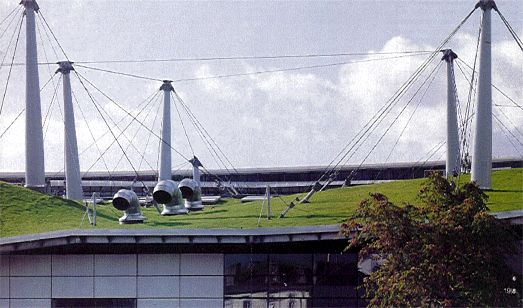In 1818, when Luke Howard wrote “The Climate of the London,” he measured the average temperatures in London to be 1.579 degrees warmer than the country (Chang, pp. F1). No coincidence, Mr. Howard’s findings became the first recorded evidence for the urban heat island effect. Two hundred years later, we are finally starting to deal with this problem. Exacerbated by industrialization and urban sprawl, the urban heat island effect has only gotten bigger. Average temperatures in today’s largest cities can be as much as 10 degrees warmer than temperature in surrounding areas (Chang, pp. F1).
The urban heat island effect can pose serious risks to both humans and the environment. With greater city temperatures, an increase in energy use leads to the release of more greenhouse gases, an increase in levels of air pollution, and higher costs. The assertion that urban heat islands also cause “human discomfort and sometimes human health risks” (Voogt, pp. 1) is not laughable. The Heat Wave of 2003, augmented by the urban heat island effect, led to the death of around 50,000 Europeans.
One way through which we can reduce the urban heat island effect is by changing the nature of urban roofs. When NASA’s Project ATLANTA (Atlanta Urban Growth and Effects on Climate and Air Quality) used remote sensing to map Atlanta, Georgia from above, they discovered that black rooftops were some of the hottest places in the city, absorbing remarkably large quantities of heat. If reflective roofing or green roofs are fitted on buildings, though, large quantities of heat can be reflected back into the atmosphere and the urban heat island effect can be mitigated.
Whereas the benefits of reflective roofing are contained to reducing the urban heat island effect, the benefits of green roofs extend to stormwater management, maintaining biodiversity, improving air quality. For these reasons coupled with a certain aesthetic intrigue and media attention, green roofs are slowly becoming a force in urban design. Although green roofs are common in Europe, the United States has been slow to adopt this technology. Chicago, though, has taken the lead when it comes to green architecture and smart growth. In 2001, at the urging of long-time Mayor Richard M. Daley, a 20,000 square foot green roof was constructed atop Chicago’s ninety-year old grey stone City Hall. Four years later, according to Chicago’s commissioner of the environment, Sadhu Johnston, “There [are] approximately two million square feet of green roofs already built or in various stages of construction” (Chamberlain, pp. C8). Even though the economic merit of green roofs is still up to debate, I believe that they can become part and parcel of plans for future urban development.

Picture of Suspended Green Roof at the 'International School', Lyons, France. Architects: Jourda & Perraudin. Source: Architectural Review, August 1993, pages 15/8 to 21/8.
Here is a list of readings, arranged logically rather than alphabetically, that were assigned to the class and discussed during my 04/19/06 presentation:
Chang, Kenneth. "Scientists Watch Cities Make Their Own Weather." The New York Times. 15 Aug 2000; pp. F1.
Voogt, James A. "Urban Heat Islands: Hotter Cities." American Institute of Biological Sciences. Nov 2004. <http://www.actionbioscience.org/environment/voogt.html>.
"Smart Growth and Urban Heat Islands Factsheet." Environmental Protection Agency. <http://www.epa.gov/hiri/resources/pdf/smartgrowthheatislands.pdf>.
Levine, Ketzel."'Green' Roofs Sprout Up All Over." Morning Edition. National Public Radio, 23 Jun 2004. Audio Archive. <http://www.npr.org/templates/story/story.php?storyId=1970286>.
In the past decade, The New York Times has featured extensive coverage of advances in smart growth and green architecture. Here are two additional readings on the state of green roofs in the United States:
Chamberlain, Lisa. “A Roof Garden? It’s Much More Than That.” The New York Times. 10 Aug 2005; pp. C8.
Fountain, John W. “Cooling Chicago, Starting With a Garden on the Roof of City Hall.”The New York Times. 28 Oct 2000; pp. A8.